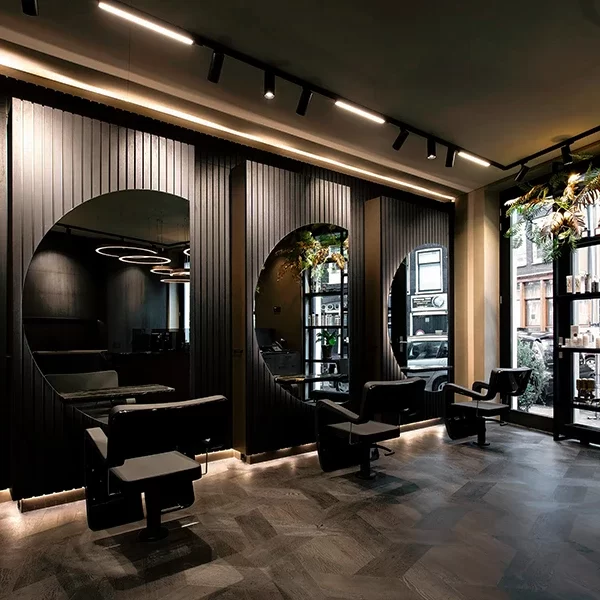What kind of paint to use for wood? (The best color for wood)
Choosing the right color for wood depends on various characteristics, including the type of wood, the type of project, the location of the wood, and your personal taste.
The right choice of paint can make any wood project complete and flawless. But for this to happen, you need to know what is the best color for wood. Ideally, it depends on the type of project you are working on, the type of wood used, the condition of the wood surface, and your personal taste.
Paying close attention to these factors will help you choose the best color for your wood. This article deals with the types of paints available for use on wood. It also reviews the best types of wood stain on the market and provides helpful tips and advice on using these products for great results.
What is the best color for wood?
Latex paint is the best paint to use on wood because it is water-based and therefore dries quickly. It also has very low levels of volatile organic compounds, or VOCs, which are harmful to the environment. Latex paint is more affordable than other types of paint.
However, various factors such as the requirements of your project can make the use of a different type of paint unavoidable. So it is important to know your project to determine what is best for you.
5 types of wood colors to use in your project
There are different types of paints with different properties that make them suitable for different applications.
Knowing the different types of paint available and their distinguishing characteristics can help you know what you want and choose the best paint for your needs.
1. Special oil-based paint for wood
As the name suggests, oil-based paint consists of colored pigments suspended in an oil such as linseed oil. This type of paint is usually slow drying because it contains oil as a base or solvent. But if you want, you can dry the oil paint faster.
In addition to oil, these paints may contain organic and inorganic substances that are added to modify the viscosity of the paint. Similarly, if you want to thin oil paints, you can use an organic solvent. Oil-based paints are usually the glossiest and may have some kind of varnish added to them to increase their gloss. Many professional painters and experienced builders choose oil paints because of its durability.
The oil in it helps create a smooth surface when the paint dries and creates a nice glossy finish that repels water and resists scratching. In most cases, if your project is finished with oil paint, it will not require a top coat, provided you use a high-quality brush or sprayer to apply it.
positive points
- Oil paints are more durable than acrylics or watercolors and can last for years without fading.
- They produce a very smooth surface that shows less brush strokes than other types of paint.
- Oil paints are thick, which means they can be used to cover previous layers of paint.
cons
- They take longer to dry than other types of paint, so you have to be patient when painting with them.
- Oil paints are more toxic than other paints
2. Water-based paint
Water-based paint consists of color pigments and binders suspended in water as a carrier or solvent. These paints are perhaps the easiest to use and clean because of the water in them, so you can clean them with water. Additionally, diluting water-based paints simply requires adding water and mixing to the desired consistency.
Among the main advantages of water-based paints is their quick drying time. Water-based paints dry very quickly compared to oil-based paints, which often means completing the project sooner. On the other hand, water-based paints are less durable than oil-based paints. So they are not always the preferred choice for outdoor use.
However, advances in paint formulations continue to produce a variety of water-based exterior paints with remarkable durability. You can also often use a protective coating to make these colors last longer in harsher environments.
positive points
- Easy to use
- Creates a smooth surface
- It dries quickly
- Affordable
cons
- Water-based paints are not as durable as oil-based paints
- It may not be suitable for certain surfaces such as MDF boards
3. Latex paint, the best type of paint for wood
Like water-based paints, latex paints contain water as a base in their formula. However, due to the acrylic resin in it, they dry more slowly than water-based paints.
Latex paints are also usually purchased in large quantities, so they are more suitable for large projects. Ideally, latex paint is easier to work with and clean than oil paint.
But the resulting coating is often less durable than oil paint coating. These colors are also more likely to show brush strokes on the finished product.
But you can always add a Flutrol material to your paint to remove the brush marks on the painted surface. You can choose from different gloss levels of latex paint, from matte and velvet to gloss and semi-gloss. The smoother the surface, the less likely you will need a top coat.
positive points
- It is easily cleaned.
- It is relatively cheap.
- It dries quickly and does not require much ventilation.
- Available in a wide range of colors and finishes.
- Can be used for indoor and outdoor surfaces.
cons
- Latex paint is not as durable as oil paint and may not hold up well over time.
- Latex paint may also be more prone to fading and staining than oil paint.
4. Acrylic paint is the best paint for wood
Acrylic paints are often used for art or small projects, such as portrait painting on wooden boards or canvas.
They consist of pigments suspended in an acrylic polymer emulsion and silicone oils, emollients, stabilizers, defoamers or metallic soaps.
Most acrylic paints are usually water-based, but the paints become water-resistant when they dry. They are easy to clean with soap and water because they are water soluble.
The paint is also completely non-toxic and wipes off easily, so there’s no need to wear a pair of gloves when handling it.
Aside from being non-toxic, acrylic paints have almost zero odor and are ideal for people with odor sensitivities or allergies.
You can find acrylic paints in a wide range of colors, decorative options and finishes, so they are very versatile. In addition, you can easily create desired colors and finishes by mixing acrylic paints.
Whichever option you choose, acrylic is one of the easiest types of paint to use. They allow you to create special effects using different colors and materials. And you can reuse the brushes as many times as you like with acrylic paint.
Most acrylic paints are also inexpensive, so you can buy them in large quantities to match the scope and size of your projects.
positive points
- Acrylic paint is easy to use and clean.
- It dries quickly, so you can apply successive layers very quickly.
- Colors become clear and matte.
- It’s waterproof when dry, so it’s great for painting outdoors or surfaces that will be exposed to water.
- Acrylic paint can be used on various surfaces including canvas, paper, wood, metal and plastic.
cons
- Acrylic paint can be toxic if swallowed.
- Fumes from acrylic paints can be harmful, so it’s best to avoid using them in poorly ventilated areas.
- Acrylic paint is not as durable as oil paint, so it may not be the best choice for projects that require longevity.
- Acrylic can be difficult to remove after it dries, so be sure to test your chosen removal method on a small area before starting your project.
5. Chalk paint
Milk paint or chalk paint is a type of water-based paint that can be applied to almost any surface. This type of paint requires minimal preparation and easily achieves the desired finish. And it can be considered one of the best colors for wood.
However, you should apply a protective layer to the paint to prevent peeling. Chalk paint differs from standard water-based paint in that it can look like chalk and create a matte finish that some people like.
This uniqueness makes chalk paint desirable, especially when used on the only attractive item in the room, such as furniture. Chalk paint is easy to apply and creates a subtle, slightly antiqued or weathered look on wood surfaces.
You can use this color for wooden headboards, clothes racks or wardrobes to create great vintage finishes. Perhaps the main advantage of using chalk paint is its minimal preparation.
You don’t necessarily need to prepare the surface much before painting because chalk paint sticks to almost any surface. Chalk paint is also waterproof, which makes it easy to use on most surfaces.
positive points
- If you want to give your furniture an old look, chalk paint is a good option.
- It is very versatile and can be used to paint different surfaces including wood, metal and plastic.
- Plaster paint is easy to apply and does not require plastering or sanding.
- It has a matte finish that gives the furniture a traditional look.
- The paint is also water-based and non-toxic, making it safe for indoor and outdoor use.
cons
- Chalk paint is difficult to work with, it is thick and dries quickly, so it is difficult to achieve a smooth finish.
- It’s hard to find a color you like because it’s matte, most other colors are translucent or transparent so you can see the surface underneath.
- Covers are not very durable and can scratch easily.
- It is also very expensive compared to other types of paint.



 As a founding member of the Association of International Exhibition Organizers of Iran, by improving the quality of its services, Nemangar has succeeded in becoming a member of the World Union of International Exhibitions and its exhibitions have been approved by this international union.
As a founding member of the Association of International Exhibition Organizers of Iran, by improving the quality of its services, Nemangar has succeeded in becoming a member of the World Union of International Exhibitions and its exhibitions have been approved by this international union.




































